Moon dust ‘rarer than gold’ arrives in UK from China
7 hours agoGeorgina RannardClimate and science reporterKate Stephens and Tony JolliffeBBC climate and science team

 Tony Jolliffe/BBC News
Tony Jolliffe/BBC NewsThe first samples of Moon rock brought back to Earth in nearly 50 years have arrived in the UK – on loan from China.
The tiny grains of dust are now locked inside a safe in a high security facility in Milton Keynes – we were given the first look at them.
Professor Mahesh Anand is the only scientist in the UK to have been loaned this extremely rare material, which he describes as “more precious than gold dust”.
“Nobody in the world had access to China’s samples, so this is a great honour and a huge privilege,” he says.

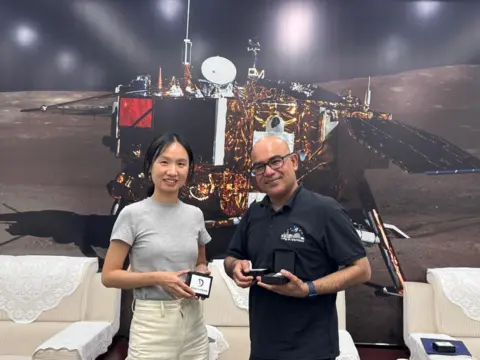 Mahesh Anand
Mahesh AnandAfter grinding and zapping the dust with lasers, Prof Anand’s team hope to answer fundamental questions about how the Moon formed and about the early years of planet Earth.
Inside the grains of dust could be evidence to back up scientists’ theory that the Moon was made from the debris thrown out when Earth struck a Mars-sized planet 4.5 billion years ago.
China collected the rocks on its Chang’e 5 space mission in 2020 when it landed on a volcanic area called Mons Rümker.
A robotic arm drilled into the soil to collect 2kg of material, which was brought back to Earth in a capsule which landed in Inner Mongolia.
It was the first successful lunar sampling since a Soviet mission in 1976 and catapulted China into a leading position in the new space race.
Now, following a long tradition of global collaboration between space scientists, China has for the first time granted seven international researchers samples to make new discoveries.

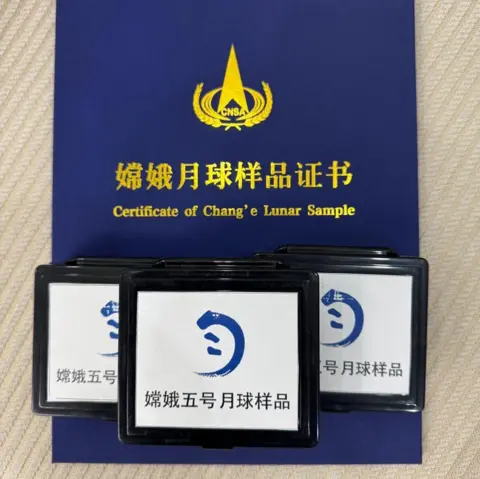 Mahesh Anand
Mahesh AnandThe tiny vials were handed to Prof Anand at a glamorous ceremony in Beijing last week, where he met colleagues from Russia, Japan, Pakistan and Europe.
“It was almost like a parallel universe – and China is so far ahead of us in terms of their investment in space programmes,” he said.
He returned to the UK with the precious cargo in the safest place he could think of – his hand luggage.
At his lab at the Open University in Milton Keynes, we step onto sticky mats to clean our shoes and put on plastic gloves, gowns, hair nets and hoods.
The environment inside this high security room must be spotless to prevent contamination.
If Earthly material mixes with these extra-terrestrial specs, it could permanently ruin the analysis Prof Anand’s team will do.

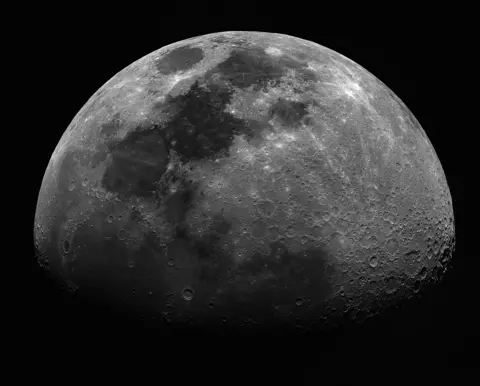 Getty Images
Getty ImagesWe crouch down on the floor in front of a row of safes. Prof Anand unlocks one and carefully pulls out a ziplock bag with three containers the size of boxes that could keep a necklace.
Wedged firmly in each one is a see-through vial with a dusting of dark grey at the bottom.
That is the Moon dust.
It looks underwhelming, but it is humbling to think of its cosmic journey.
And Prof Anand says they don’t need any more than this 60mg in total.
“Here, the small is mighty. Believe me, it is enough to keep us busy for years to come because we specialise in working on the micro,” he adds.

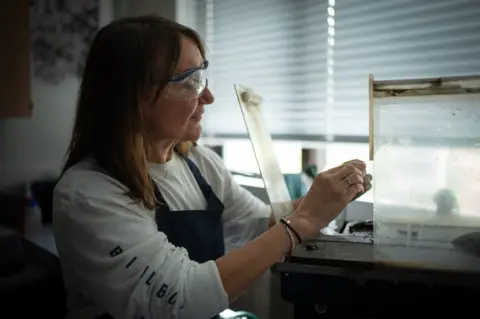 Tony Jolliffe/BBC News
Tony Jolliffe/BBC NewsIn a lab down the corridor, technician Kay Knight will be the first person to actually work on the grains when the vials are opened.
She’s been cutting and grindings pieces of rocks for 36 years, but this will be the first time she’s worked on something straight from the lunar surface.
“I’m extremely excited,” she says, after showing us how she cuts meteorites using a diamond blade.
“But I’m nervous – there’s not much of the samples and they can’t really go and get more very easily. This is high stakes,” she adds.
After she prepares the samples, they will go into two more labs.

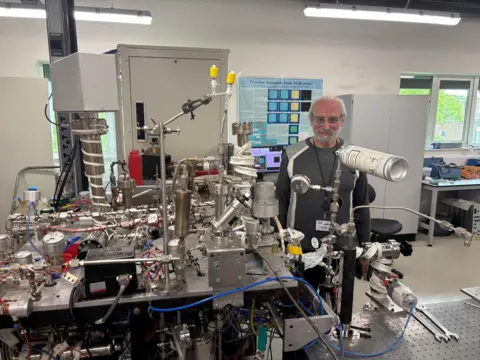 BBC News
BBC NewsIn one, we see a machine with an intricate network of countless tubes, valves and wires.
Technician Sasha Verchovskyhas been building it since the early 1990s. He shows us the small cylinder where the specs of dust can be heated to 1400 Celsius. That will help them extract carbon, nitrogen and nobel gases.
This is completely unique, and is one of the reasons Prof Anand believes his lab was chosen to receive the rare samples.

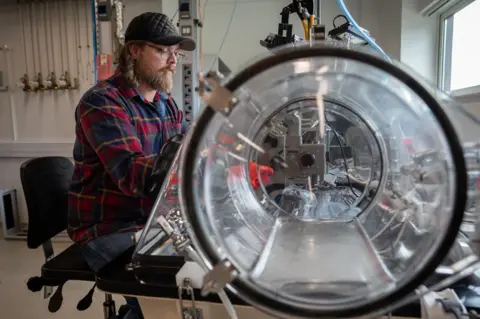 Tony Jolliffe/BBC News
Tony Jolliffe/BBC NewsJames Malley, a research technician, operates a machine that can work out how much oxygen is contained within the specs of dust.
He shows us a test run of what he will do.
“I’m going to hit that grain on the tray with a laser,” he says, showing the scene magnified on a computer screen.
“It’s going to start to glow, and you will see it melt inwards,” he says.

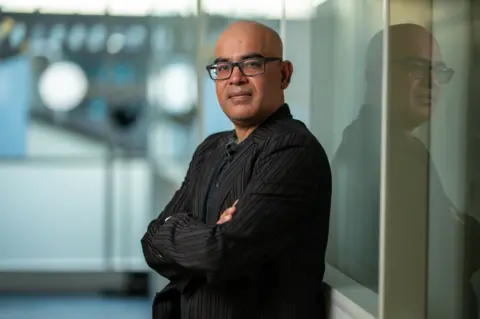 Tony Jolliffe/BBC News
Tony Jolliffe/BBC NewsThe team has a year to finish their research. By the end, their search for answers will probably end up destroying the samples.
But China has gone further since the Chang’e 5 mission.
In 2024 its Chang’e 6 launch brought back the first samples from the far side of the Moon. It’s a deeply mysterious place that might have evidence of long-quiet volcanic lava flows.
“I very much hope that this is the beginning of a long-term collaboration between China and international scientists,” says Prof Anand.
“A lot of us built our careers working on samples returned by Apollo missions, and I think this is a fantastic tradition to follow. I hope that other countries will follow suit,” he adds.